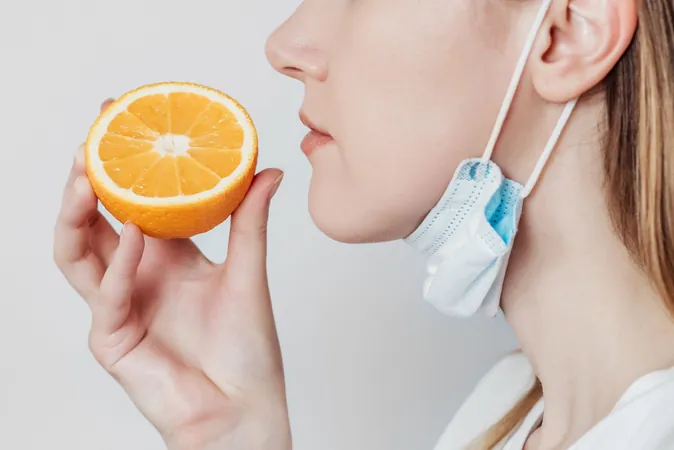
Unlocking the Secrets of Smell Regeneration: A Breakthrough 3D Model
2025-06-18
Author: Wei Ling
Revolutionary 3D Model Sheds Light on Smell Recovery
In a groundbreaking achievement, scientists have created a cutting-edge 3D tissue model from mouse cells to delve into the fascinating world of how our noses regenerate the neurons responsible for our sense of smell. This innovative organoid system aims to pave the way for testing potential therapies for individuals experiencing smell loss.
Surprising Revelations About Stem Cells
Researchers from Tufts University have made unexpected discoveries regarding the regeneration of olfactory neurons—the sensory cells that detect smells. Their findings suggest that a once-overlooked type of stem cell, believed to be mostly inactive, plays a critical role in supporting the regeneration of these olfactory neurons.
The Resilience of Nose Neurons
Unlike the neurons in our central nervous system, the sensory neurons located in our nasal cavity possess remarkable regenerative capabilities throughout our lives. However, this resilience is constantly challenged by factors such as environmental exposure, viral infections, and aging, which can lead to partial or total loss of smell.
A Unique Approach to Understanding Regeneration
To uncover the mysteries of olfactory neuron regeneration, the Tufts team designed a simple yet effective 3D olfactory tissue model. This organoid allows scientists to explore the creation of new sensory neurons in the nose and understand why this process may decline with diseases or as we age.
Collaborative Forces: The Role of HBCs and GBCs
The study published in *Cell Reports Methods* emphasizes the synergy between two types of olfactory stem cells: horizontal basal cells (HBCs) and globose basal cells (GBCs). These stem cells not only play active roles in neuroregeneration but also communicate closely to foster the creation of new olfactory tissue.
KRT5 and the Hidden Power of HBCs
During their investigation, researchers identified a group of HBCs characterized by the production of a protein called KRT5. These KRT5-positive HBCs were found to be vital for generating new olfactory neurons within the organoid model. When these specific HBCs were removed, neuron formation dropped significantly, underscoring their crucial role in the regeneration process.
Aging: The Decline of Neuron Formation
The team also examined how aging impacts the ability to regenerate olfactory neurons. They noted a noteworthy decline in the neuron-generating capacity of cells from older mice, potentially linked to a decrease in the GBC population as we age.
Accessible Research for All
Lead author Juliana Gutschow Gameiro aimed to create a model that is user-friendly for researchers across various fields, especially given the increased interest in olfactory epithelial cells due to conditions like COVID-19 and Parkinson’s disease.
Towards Human Smell Restoration
The ultimate ambition of this research is to evolve the mouse model into a human organoid system, enabling the screening of potential therapies for those who have lost their sense of smell. Organoids have already transformed research in other organs and the scientific community is eager to develop a similar model for human olfactory tissue. This journey, however, comes with challenges—such as isolating human olfactory stem cells and ensuring they thrive in culture.
Bringing personalized therapies for smell restoration closer to reality could have profound implications for millions. This cutting-edge research opens the door to understanding and recovering one of our most precious senses.

 Brasil (PT)
Brasil (PT)
 Canada (EN)
Canada (EN)
 Chile (ES)
Chile (ES)
 Česko (CS)
Česko (CS)
 대한민국 (KO)
대한민국 (KO)
 España (ES)
España (ES)
 France (FR)
France (FR)
 Hong Kong (EN)
Hong Kong (EN)
 Italia (IT)
Italia (IT)
 日本 (JA)
日本 (JA)
 Magyarország (HU)
Magyarország (HU)
 Norge (NO)
Norge (NO)
 Polska (PL)
Polska (PL)
 Schweiz (DE)
Schweiz (DE)
 Singapore (EN)
Singapore (EN)
 Sverige (SV)
Sverige (SV)
 Suomi (FI)
Suomi (FI)
 Türkiye (TR)
Türkiye (TR)
 الإمارات العربية المتحدة (AR)
الإمارات العربية المتحدة (AR)